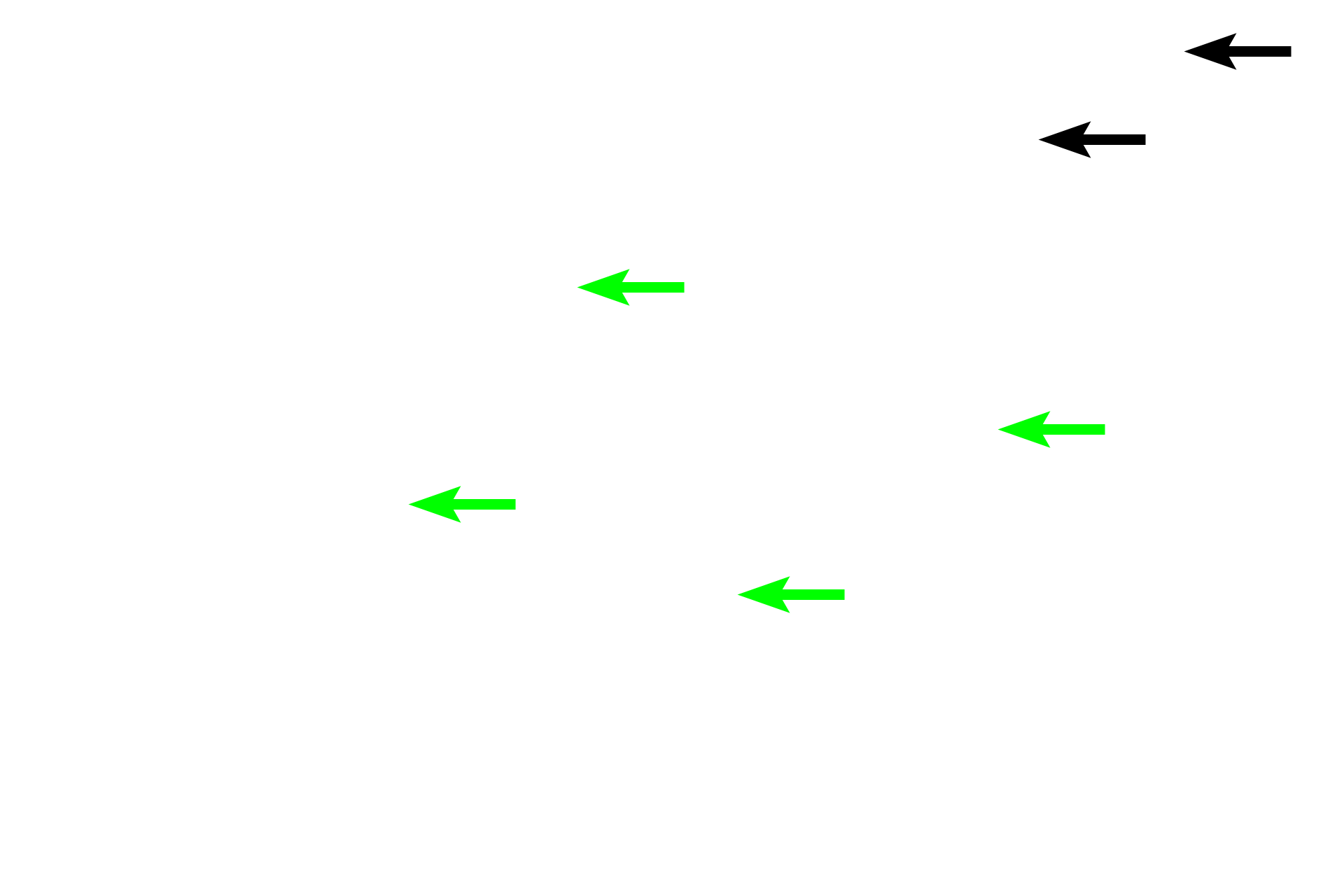
Esophagus
This trichrome-stained section emphasizes the different layers of the esophagus. 10x

Mucosa >
The mucosa of the esophagus is lined by a stratified squamous moist epithelium, that provides a protective, moist surface for the passage of food. At this level, the muscularis mucosae forms an incomplete layer, but becomes fully developed in the lower regions.

- Epithelium
The mucosa of the esophagus is lined by a stratified squamous moist epithelium, that provides a protective, moist surface for the passage of food. At this level, the muscularis mucosae forms an incomplete layer, but becomes fully developed in the lower regions.

- Lamina propria
The mucosa of the esophagus is lined by a stratified squamous moist epithelium, that provides a protective, moist surface for the passage of food. At this level, the muscularis mucosae forms an incomplete layer, but becomes fully developed in the lower regions.

- Muscularis mucosae
The mucosa of the esophagus is lined by a stratified squamous moist epithelium, that provides a protective, moist surface for the passage of food. At this level, the muscularis mucosae forms an incomplete layer, but becomes fully developed in the lower regions.

Submucosa
The submucosa consist of dense, irregular connective tissue and possesses tubulo-acinar esophageal glands. These glands lubricate the esophagus during food transport.

- Esophageal glands
The submucosa consist of dense, irregular connective tissue and possesses tubulo-acinar esophageal glands. These glands lubricate the esophagus during food transport.

Muscularis externa
The muscularis externa is formed of inner circular and outer longitudinal layers. The myenteric plexus (Auerbach’s plexus), a component of the autonomic nervous system, is located between the muscle layers and innervates the muscle.

- Myenteric plexus
The muscularis externa is formed of inner circular and outer longitudinal layers. The myenteric plexus (Auerbach’s plexus), a component of the autonomic nervous system, is located between the muscle layers and innervates the muscle.

Adventitia
For most of its length, the esophagus is attached to the posterior body wall and does not protrude into the thoracic cavity. Thus the outer tunic is an adventitia of connective tissue.